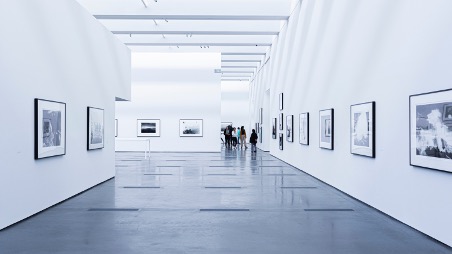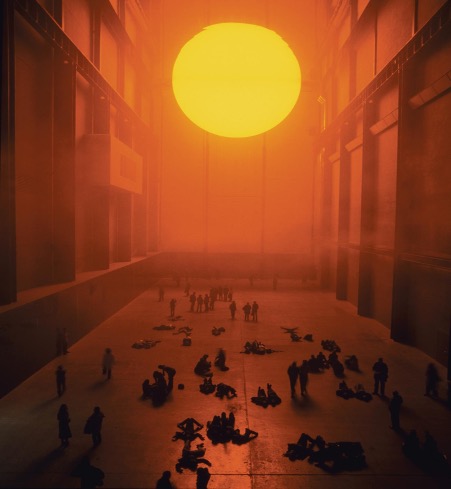Written by Liting 2022 Cohort
Artworks have always been the object of seeing and explaining by audiences, which usually hang high on the wall, motionless. Hence the audience can only observe through the glass and guess the artist’s thoughts. It is equally valid that each art museum is like a grave, cold, and white box.

With the development of technology, this way of seeing is changing: an interactive, conversational way is emerging.
When you walk into this huge exhibition hall, you are instantly attracted by a beam of orange light in this exhibition hall, which illuminates the whole space. And then you close your eyes and feel the air soaked in a fine mist of sugar and water. When you look up, the hall’s ceiling is covered with a huge mirror, reflecting the “sunlight” on you. Moreover, you can lazily lie on the ground, wave your arms and legs, or even eat the food you brought. The whole experience is like lying on the beach in the sun and having a picnic…

Experience is more important than explanation.
It all happens in this artwork- “The weather Project,” which is by my favourite artist’s work, Olafur Eliasson, and he hopes audiences can come here to enjoy and participate in this exceptional experience. This kind of Interactive artwork differs from the wall works we discussed before. These works no longer rely on the artist’s interpretation of the work; the topic is usually related to “people and people, people and society,” and the process of seeing is more important than the meaning. Like a process of information exchange between the artist and the audience, they also serve the audience’s experience.
Other interactive works
There exist many excellent interactive artworks. For instance, “Raining Room” by Random International in 2012; American famous artist Ann Hamilton’s swing installation – “the event of a thread.” Audiences can sit in different positions and swing when they enter the exhibition. The fairytale white cloth will float and be light and light. In addition, I have to mention Carsten Höller’s “Isometric Slides”; the audience was invited to play in several giant slides built at the exhibition site. These works do not seem to have any valuable content. Still, I think these works allow the audience to participate in artworks and instead show a new freedom of contemporary art, which can leave space for interpretation and arouse people’s deep resonance.
Today, when more and more works of art pay attention to the feelings of the audience, so the way of viewing art has also changed: From awing at the beginning, and adoring, until interacting now, which method of seeing do you like most?